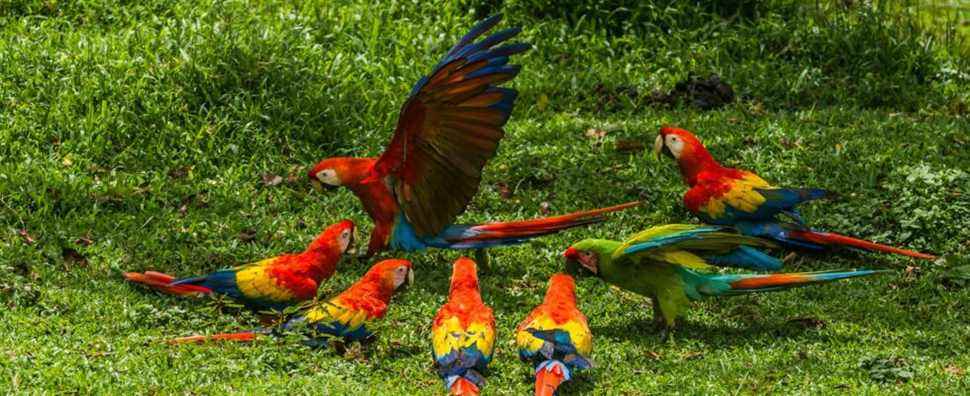Researchers from the universities of Sheffield and Debrecen in Britain and Hungary have photographed the plumage of 4,500 species of passerines, an order that accounts for more than half of the birds living on Earth. Objective: to realize that birds have brightly colored plumage when approaching the geographic equator.
They photographed the male and the female of each species (their belly, their back, their wings), then they analyzed the color of each plumage pixel by pixel, and by computer, thanks to a system of deep learning, – system that allows to process a huge mass of data. Each species could be represented on a map of the world according to the colors of its plumage. Both as it appears to human eyes, and to the eyes of birds.
Two centuries later, Dr. Chris Cooney, with @bmssheffieldhas proven Darwin’s long-standing theory that tropical birds are more colorful.
But how has @ChrisCooney101 managed to quantify coloring? 1/5
Read more: https://t.co/ZRf8llMYKu
— The University of Sheffield (@sheffielduni) April 5, 2022
Because the birds do not see their congeners with exactly the same colors as us. They perceive them in the ultraviolet and therefore detect shades invisible to our eyes. In their work, these researchers took care to take photos with the colors visible in UV and outside. And the conclusion is clear: the closer you get to the equator, the more variegated the feathers. There is indeed a color gradient which evolves according to latitude, as Charles Darwin thought at the beginning of the 19th century. This work was published in the journal Nature Ecology and Evolution.
The mystery is not completely cleared up, but several tracks are put forward to explain the phenomenon. First, in lush vegetation, these bright colors allow birds both to camouflage themselves and to be visible to their congeners, at short distance, whereas, in our country, sparrows, tits or finches blend in more easily in the landscape with shades of gray or brown, especially in winter. There is also the food track: in tropical areas, birds feed more easily on fruits and nectar. They thus absorb more carotenoids, which make it possible to synthesize the pigments necessary for a yellow, red or orange plumage.
